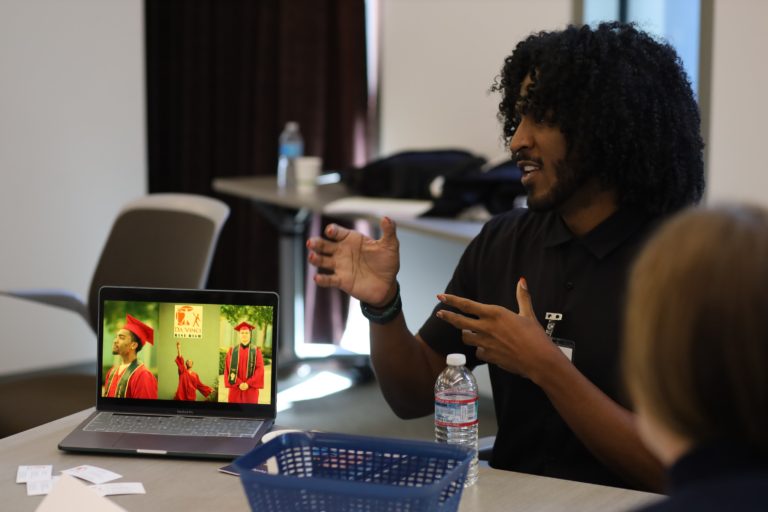Y-HEAR-US
Youth-led Homeless Education Action Research Uniting Systems
Events
Y-HEAR-US findings and publications have brought increased awareness and attention to students experiencing homelessness, as well as built new alignment and collaboration among higher education and local/regional leaders to improve services and outcomes for this population. Since 2023, the California Department of Education has invested over $250,000 into two policy convenings and new programming, bringing statewide leaders together to transform the status quo of students experiencing homelessness.
This first convening took place on October 27, 2023, as more than 100 policy makers, practitioners and researchers gathered at UC Berkeley for a “Learning Exchange” to share insights and discuss research on the growing crisis of student homelessness in California. Representatives from sixteen of twenty funded school districts shared best practices gathered from new interventions to support students and families experiencing homelessness. Attracting participants from all levels of education across the state, this convening was a crucial first step for the mainstream professional education community to take greater ownership of identifying and supporting students experiencing homelessness. For more information, see our Report on the event. You can also review the event interactive Storymap for more information and resources.


On September 27, 2024, California Homeless Education Technical Assistance Centers (HETACs), 21CSLA, and CC+S will host a second convening at UC Berkeley, “Catalyzing Action Exchange,” to reflect on all that has been accomplished, build together across educational systems and set the course to sustain the change and systematize our lessons into 2025 and the decades to come. With short-lived yet historic federal funding to support this population set to expire at the end of September 2024, the timing of this event is crucial to secure long-term funding and support for this vulnerable student population – who are so often isolated, marginalized, and rendered “invisible.”
For more information see:
